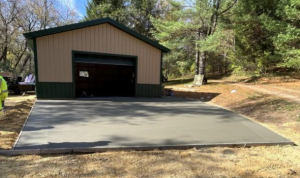Cement versus Concrete
Scraping a chalkboard (also known as a blackboard) with fingernails produces a sound and feeling most people find extremely irritating. Basis of this innate reaction to sound has been studied in the field of psychoacoustics (branch of psychology concerned with perception of sound and its physiological effects).
In response to audio stimuli, a human mind’s way of interpreting sound can be translated through a regulatory process called Reticular Activating System. Located in the brain stem, the Reticular Activating System continually listens, even throughout delta-wave sleep, to determine importance of sounds in relation to waking cortex or rest of body from sleep. Chalkboard scraping, or noises illiciting an emotional response, have been known to trigger tendencies from the fight or flight response acting as the bodys primary self-defense mechanism.
Superman has his Kryptonite, mine happens to be misused construction terms. Here, in Middle America, I have gradually adapted to term “rafters” being used for roof trusses. My favorite chalkboard scrape happens to be with use of “cement” when the correct term would be “concrete”.
Although terms cement and concrete often are used interchangeably, cement is actually an ingredient of concrete. Concrete is a mixture of aggregates and paste. Aggregates are sand and gravel or crushed stone; paste is water and portland cement.
 Cement comprises from 10 to 15 percent of concrete mix, by volume. Through a process called hydration, cement and water harden and bind aggregates into a rocklike mass. This hardening process continues for years meaning concrete gets stronger as it gets older.
Cement comprises from 10 to 15 percent of concrete mix, by volume. Through a process called hydration, cement and water harden and bind aggregates into a rocklike mass. This hardening process continues for years meaning concrete gets stronger as it gets older.
Portland cement isn’t a brand name, but a generic term for a cement type used in virtually all concrete, just as stainless is a type of steel and sterling a type of silver. Therefore, there is no such thing as a cement sidewalk, or a cement mixer; proper terms are concrete sidewalk and concrete mixer. I rest my case.






